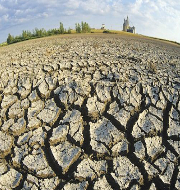Early El Nino
Satellite observations play a crucial role in monitoring and understanding various natural phenomena. Recently, the Sentinel-6 Michael Freilich satellite detected an intriguing type of wave known as Kelvin waves. These waves have significant implications for El Nino and sea levels.
Kelvin Waves: Precursors of El Nino
Kelvin waves were spotted recently by the Sentinel-6 Michael Freilich satellite. These waves travel from west to east along the equator in the Pacific Ocean towards the west coast of South America. Scientists have identified Kelvin waves as potential precursors to El Nino conditions, a climate phenomenon that impacts weather patterns worldwide.
Impact on Sea Levels
One key aspect of Kelvin waves is their influence on sea levels. As these waves propagate, they bring warmer water with them, which contributes to an increase in sea levels. The expansion of water due to warming results in higher sea levels, particularly in regions experiencing the passage of Kelvin waves.
El Nino’s Effects on the Indian Monsoon
When Kelvin waves move from the warmer western Pacific to the eastern Pacific, countries like India experience significant impacts. El Nino weakens the monsoon circulation across the Indian subcontinent, leading to altered rainfall patterns. The connection between El Nino and Indian monsoon rainfall reveals that El Nino years often result in weaker and less consistent monsoon rainfall in India.
Trends in Indian Rainfall during El Nino
Over the last few decades, India has witnessed varying trends in rainfall during El Nino years. While occasionally receiving normal or above-average rainfall, the previous four El Nino years have shown a divergent trend. India experienced drought conditions and rainfall below 90% of the long-term average, emphasizing the significance of El Nino’s impact on regional precipitation.
Trade Winds and El Nino
El Nino also has a notable effect on trade winds. These weather patterns weaken during El Nino episodes, which can bring cooler and wetter conditions to regions such as the United States. The alteration in trade winds contributes to the overall atmospheric changes associated with El Nino.
Future El Nino Formation
The World Meteorological Organization and the US National Oceanic and Atmospheric Administration have reported the possibility of El Nino formation in the upcoming months. Continuous monitoring of ocean conditions in the Pacific using tools and satellites like Sentinel-6 Michael Freilich will provide valuable insights into the development and intensity of El Nino.
Satellite Detection of Kelvin Waves
Sentinel-6 Michael Freilich satellite employs a radar altimeter to detect Kelvin waves. By measuring the height of the ocean’s surface using microwave signals, the satellite can identify areas where the sea levels are higher due to the passage of Kelvin waves.
Month: Current Affairs - May, 2023
Category: Environment Current Affairs


